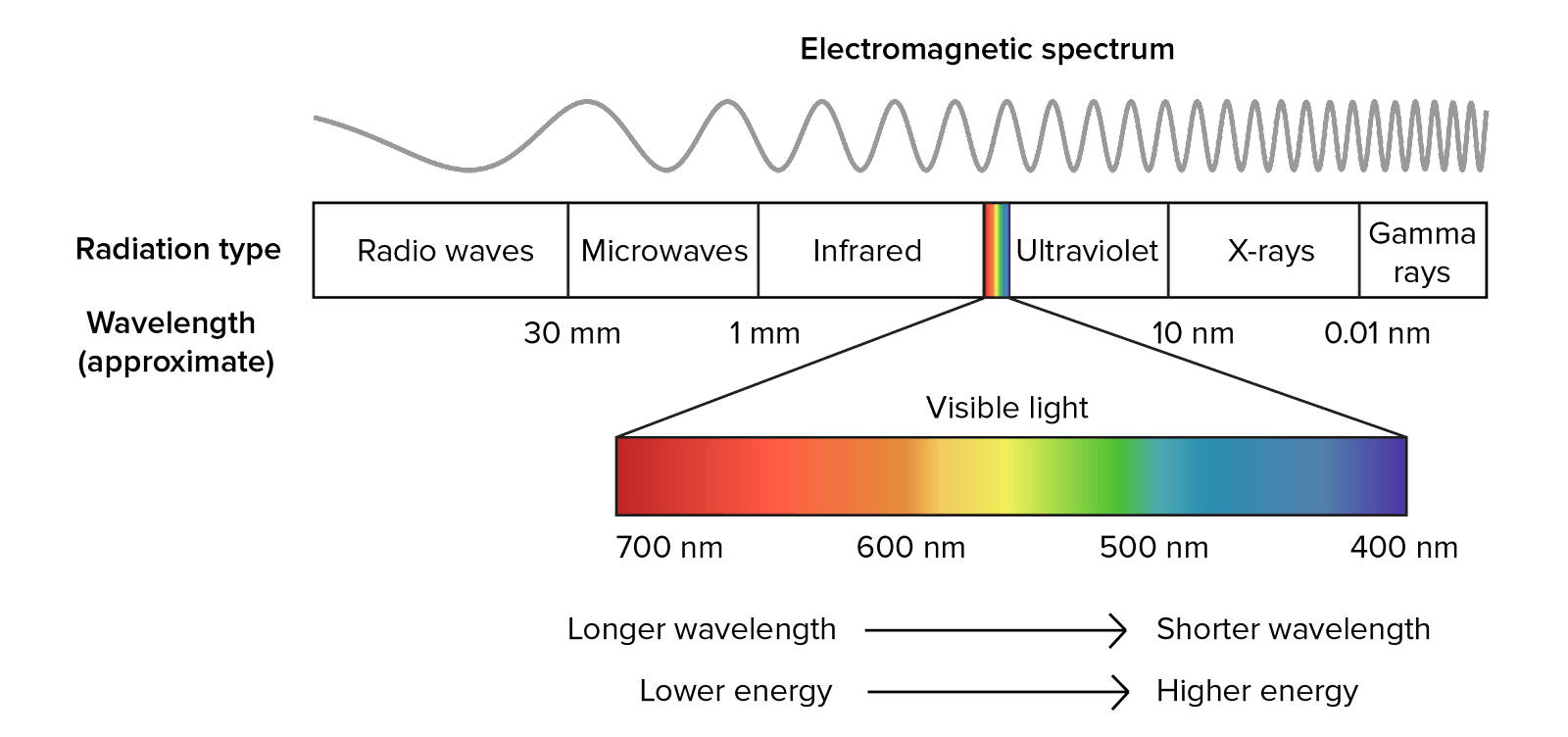What are these Frequencies Anyway?
Lesson 2
Our discussion of frequencies and vibrations begins with the understanding of energy. Energy is considered to be the force that connects all atoms and particles in the universe. In ancient cultures, energy is also called life force, prana, Qi, and spirit. Since the early 19th century scientists in the emerging field of quantum physics began exploring how energy relates to the structure of matter. By breaking matter down to the sub atomic level, they discovered that physical matter is made up of atoms with vortices of spinning and vibrating energy, and inside atoms are even smaller particles called quarks and photons with their own unique energy vortices.
The oscillating and vibrating movement of these atomic particles is referred to as vibrations. The rate of vibrations and oscillations is called frequency. Frequency is measured in hertz (Hz) and is used to determine the vibrational pattern of energy. Atoms that vibrate at faster rates have higher frequencies, and those that move slower have lower frequencies. Lower vibrational frequencies include vibrations such as light, color, and the different harmonics of sound. Higher vibrational frequencies include radio, ultra-violent, and gamma rays to name a few. It is important to understand the differences and similarities between high and low frequencies and how they can affect health which we will discuss further on.
Where do these frequencies come from?
All life exists in interconnected fields of invisible electric and magnetic energy that represent the physical world and life. These fields are called electromagnetic fields. Electromagnetic fields are made of frequencies called electromagnetic frequencies (EMFs). We are exposed to EMFs through natural forces such as sunlight, solar storms, and the Earth’s own magnetic field. They are also present in the cells and DNA of all living things. EMFs are also emitted through technology such as electric towers, wifi networks, and electrical appliances and devices.
Electromagnetic frequencies move in waves and are categorized by their wavelength. Wavelengths are measured by frequencies, or how many times the peak of a wave moves past a specific point per second. This determines how much energy the wave carries.
There are two main categories of EMFs: high-frequency and low frequency EMFs. High-frequency EMFs have short wavelengths and are considered ionizing because they contain large amounts of energy which can damage human cells and DNA if exposed to directly. Low-frequency EMFs are considered non-ionizing and have longer wavelengths that contain small amounts of energy, making them relatively safer than high EMFs, but may still have potential negative health effects.
The electromagnetic spectrum represents a continuous range of possible electromagnetic frequencies that are currently known. The electromagnetic spectrum is divided into sections called Radio waves, Microwaves, Infrared, Visible light, Ultraviolet, X-rays, and Gamma Rays.

EMFs and the Human Body
Some of the most important EMFs to humans are the Schumann Resonances. This set of frequencies continually pass around the world between the Ionosphere and the Earth’s surface. They are in the range of about 3 to 60 Hz with a peak of about 7.83 Hz. Distinct peaks are also seen at 14.3, 20.8, 27,3 and 33.8 Hz. The Schumann Resonance signal intensity is modulated and correlated with solar activity that produces radiation and plasma that flows in solar wind to the earth. These solar winds strike against the earth’s magnetic field, energizing the gas molecules in the ionosphere and increase its concentration of ions. These ions produce around 250,000 volts of electrical charge that disperses through an electrical field creating the Schumann Resonance signals. These signals have daily variations in frequency output due to different atmospheric conditions including the rotating of the earth through the atmosphere and the thickening of the ionosphere during the day, and thinning at night.
All life on Earth evolved in an environment containing the Schumann Resonance signal, and many body rhythms function in its signal ranges. In particular EEG or brain waves have been shown to synchronize with the Schumann frequencies. The alpha waves or resting and mediative waves of the brain are in the Schumann range and it is theorized that the Schumann Resonance is the main synchronizer of the brain. The Schumann Resonance shows positive effects on blood pressure as well. In other studies solar flares, another variable of Schumann Resonance, were found to be correlated to cancer, cardiac, and neurological mortalities.
The Effects of Man-Made EMFs
EMFs are also emitted from human-made sources. Electrical towers, power lines, cellular devices, microwaves, and radio waves all produce a type of EMF called extremely-low-frequency (ELF). Although these ELFs are also present in nature, human made ELFs have much higher intensity and often disrupt the reception of natural EMFs from the environment
Studies show that some DNA structures can act as an antenna and interact with and absorb frequencies on the EMF spectrum. As a result, there is a growing concern of health related effects from exposure to human-made EMFs and their potential to damage DNA sequences and increase stress responses in the body leading to a host of illnesses.
EMFs and Health
The human body has its own vibrational frequency and receives, stores, and emits electromagnetic energy. Famous researcher, Bruce Tainio found that the optimal frequency for the human body is 62-70 MHz. When each cell of the body is vibrating at this frequency, health flourishes. However, just as our cells have their own frequencies, so do bacteria, viruses and disease. When the body drops below 58 Mhz, the immune system becomes compromised and disease begins to emerge and affect the energy field. Feelings, thoughts, and emotions can get stored in the body further weakening the energy field and negatively affect our wellbeing.
Healing Frequencies
Research is showing that while there are ranges of EMFs that can cause harm to the body, there are also EMF rages that have the potential to heal. This includes the application of various alternating electric fields to inhibit tumor cell growth to the use of sound and resonance to treat physiological and psychological dis-ease. For example, the work of Dr. Anthony Holland discovered that high-frequency sound can be used to attack and destroy cancer cells, eliminating the need for surgery or chemotherapy.
Pure tones and music have been used by ancient cultures to promote well-being and current research supports the healing properties of various frequencies of sound such as equalizing brain waves, promoting healthy heart activity, reducing tension and stress, and stimulation of blood flow and immune function are just a few of the positive outcomes of sound, resonance, and harmonic therapies.
Understanding our relationship to the electromagnetic environment helps us facilitate our potential for healing and growth by reconnecting with the energy that fosters life.
In Lesson 3, you will be introduced to Energy Wellness modalities that can be applied non-locally to foster the balancing of energy and promote optimal energetic exchange throughout the body and its environment.
The Chakra System
Ancient Indian and Chinese cultures understood the concept of the subtle body and maintained the presence of an energetic anatomy in addition to the anatomy of the physical body. The anatomy of the energy body includes energy channels and energy centers. Each subtle energy body connects to the physical body through energy centers called chakras. There are hundreds of chakras in the energy anatomy, and seven chakras that are most known. These seven chakras are located along the spinal column up into the head. The chakras function as energy distribution centers. When the chakras are balanced, new life force energy flows through channels called nadis, or meridians in TCM, and into the chakras to be distributed throughout the auric field. When the chakras are unbalanced, or blocked, life force energy cannot flow into the subtle bodies, nor can lower vibrational energy be released.
The first chakra is called the root chakra, or Muladhara in Sanskrit, and it is located in the area of the perineum. This chakra governs the energy associated with safety and survival. The second chakra is the sacral chakra, or Swadhisthana, located at the lower back, genitals, and hips. It is associated with reproduction, sexuality, and creativity. The third chakra is the solar plexus chakra, or manipura, located a couple of inches above the navel. It is the center of the sense of self, power, and energy. The fourth chakra is the heart chakra, anahata, located in the center of the chest, which allows for the giving and receiving of unconditional love. The fifth chakra is the throat chakra, or vishuddha, which governs communication and allows you to take in and express information. The six chakra is the brow chakra, or ajna, in the center of the eyebrows which is considered to be the third eye, or the mind’s eye of wisdom. The seventh chakra is the crown, or sahasrara chakra. This chakra is located at the top of the head and connects the energy bodies to the greater collective energy field.
When we understand the vibrational fields of energy that surround the body, we learn how these fields affect each other. The practice of energy wellness works to restore health by addressing the imbalances of energy in the energy body. The balance of these energies creates a harmonious flow of life force energy resulting in optimal health and well-being.
In Lesson 2 you will learn exactly what these frequencies and energies that affect our health are.




